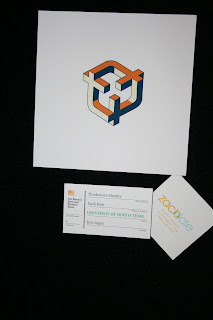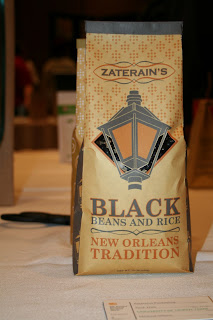Monday, November 2, 2009
Wednesday, September 30, 2009
Monday, September 14, 2009
Successful Website design
Wednesday, September 2, 2009
Monday, May 4, 2009
Inspiration
Monday, April 27, 2009
Larry Lessing
Tuesday, April 14, 2009
Eero Saarinen





Eero Saarinen: Shaping the Future is a comprehensive project exploring the work of one of the most prolific, unorthodox, and controversial masters of 20th-century architecture. The project examine the architect’s wide-ranging career from the 1930s through the early 1960s. Saarinen’s international array of buildings will be featured, as well as his path breaking designs for furniture and his master plans for civic centers and universities. The journey featured full-scale building mock-ups, never-before-seen drawings, models, photographs, films, and ephemera. An international consortium of Finnish and American scholars and curators has been assembled to bring different perspectives to Saarinen’s work and to identify resonance between mid-century culture and that of today. The emphasis will be the global relevance of Saarinen’s work. Focusing on the stylistic plurality of Saarinen’s output and the collaborative nature of his practice - themes that resonate with today’s design preoccupations. The journey presents a timely and critical view of a formative era of American modernism that continues to shape contemporary culture.
Although his career was cut short by death at age 51 in 1961, Eero Saarinen was one of the most celebrated architects of his time, both at home and abroad. In the postwar decades of what has been called “the American Century,” Saarinen helped create the international image of the United States with his designs for some of the most potent symbolic expressions of American identity: the 630-foot-tall, stainless-steel St. Louis Gateway Arch (1948-64) along the Mississippi River commemorating the nation’s westward expansion; the aluminum-and-glass General Motors Technical Center (1948-56) outside Detroit, Michigan - hailed by contemporary critics as “an industrial Versailles”; and the TWA Terminal (1956-62) at New York’s John F. Kennedy Airport, where swooping concrete vaults thrilled travelers with the glamour of international flight.
For these and other buildings, Saarinen rejected a single unifying style, preferring instead a diverse vocabulary inspired, he said, by each project’s unique “site, program, and spirit.” His multi-faceted oeuvre challenged the received orthodoxies of modern architecture. He advanced some of modernism’s most revered precepts such as its emphasis on new building technologies while, at the same time, turning away from its minimalist principles and moving towards sculptural exuberance, metaphor, and historical precedent.
Saarinen’s response to prestigious commissions from corporations such as General Motors, IBM, and CBS took the less-is-more aesthetic of Ludwig Mies van der Rohe in new and surprising directions. For GM he developed a bold color palette of exterior brick walls in tune with the latest model cars, and he clad the new corporate headquarters for Deere & Company (1957-63) of Moline, Illinois, in weathered Cor-Ten steel to evoke the ruggedness of the company’s farm machinery. In contrast, the David S. Ingalls Rink (1953-59) at Yale and the Dulles International Airport Terminal (1958-62) outside Washington, D.C., identified Saarinen as a structural virtuoso of dynamic forms. The architect’s 1958 pedestal chairs and tables for Knoll International tended towards organic, space-age shapes.
In contrast, his round brick Kresge Chapel (1953-56) for the Massachusetts Institute of Technology and Yale’s concrete-and-stone Morse and Stiles Colleges (1958-62) were frankly historicist, deferring to their time-honored university settings by drawing on images, respectively, of ancient grottos and Italian hill towns.
Saarinen’s stylistic range came to represent the postwar American ideal of an open-ended society of unbounded choice and diversity. Key to the successful projection of this ideal were Saarinen’s visionary clients - businessmen like IBM’s Thomas J. Watson and CBS’s Frank Stanton who presided over the development of progressive technologies like computers and television. Saarinen, working in close collaboration with his clients, deployed equally progressive construction and mechanical systems for new office buildings set in bucolic corporate parks. At the same time, Saarinen himself embodied the free and creative individualist. Together, Saarinen and his work represented the image of capitalist America, ever new and dynamic and in full control of its domain.
Saarinen was also completely conversant with modern American media, garnering huge press coverage and presaging today’s celebrity architect of signature buildings. Popular magazines such as Vogue, Playboy, The New York Times Magazine, and Time, which put the architect on its cover in 1956, heralded him as the most important architect of his era, both in terms of career success and artistic genius.
At the same time and continuing after his death, leading critics such as Vincent Scully questioned Saarinen’s commitment to the egalitarian ideals of the modern movement, his disregard for the urban fabric that surrounded his sculptural masterpieces, and his aesthetic inconsistency. Another leading critic, Manfredo Tafuri, cited Saarinen as a prime example of postwar American modernists who commercialized the socialist ideals of the European modern movement, and then tried to invest contemporary buildings with meaning, especially by emphasizing symbolic form over structural logic. To date, Saarinen’s work has received uneven attention in the architectural press, and most important surveys of 20th century architecture reduce his contribution to a few well-known projects.
By exploring more than 50 of the architect’s built and proposed projects, Eero Saarinen: Shaping the Future is the first opportunity to understand Saarinen’s collective work in the larger arena of postwar modern architecture.
Monday, April 6, 2009
Hillmancurtis.com videos
Sunday, April 5, 2009
Now its time to meet the real chris klee...

































Monday, March 30, 2009
journal entry
Wednesday, March 25, 2009
Monday, March 23, 2009
Saturday, March 21, 2009
Type in Urban Settings








































